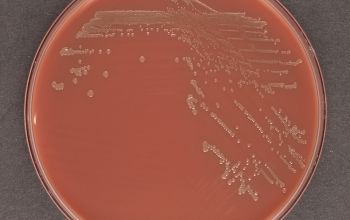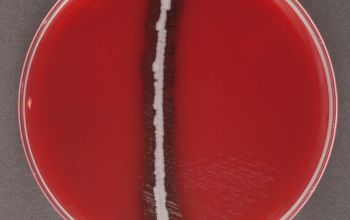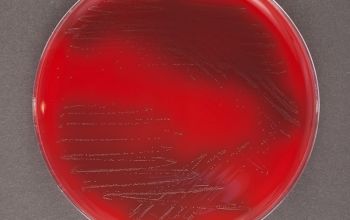Haemophilus haemolyticus
-
General information
Taxonomy
Family: Pasteurellaceae
Natural habitats
H. haemolyticus is a human commensal bacterium that colonizes the nasopharynx.
Clinical significance They are closely related to the human patogen H. influenzae but has rarely been reported to cause invasive disease. They may cause disease more as a oppertunistic pathogen
-
Gram stain
Small, pleomorphic Gram negative rods
0.2-0.3 x 0.5-0.8 µm,
may range from coccobacilli to short rods and filamentous rods.
-
Culture characteristics
-
They have fastidious growth requirements Facultative anaerobic
5% CO2 improves the growth and requirements for X and/or V factors for growth.
BA: no growth,
Growth is only achieved as a satellite phenomenon around a S. aureus. HorseBA
They induces clear ß-hemolysis in contrast to H. influenzae. However, the hemolytic activity may be lost due to multiple subcultures or other unkown mechanisms, and non-hemolytic H. haemolyticus strains are often misidentified as nontypeable H. influenzae. Many isolates are nonhemolytic even on primary isolation. CHOC-agar: (present in X- and V-factor)
Colonies are smooth, with a flat or convex shape.
They are nonpigmented (i.e., buff or light tan) or slightly yellow and are 0.5 to 2.0 mm in diameter. They have never been shown to produce a capsule.
Capsule is considered a crucial virulence factor for many bacterial pathogens, such as H. influenzae.
McConkey: no growth
BBAØ: growth
Satellite
H. influenzae and H. haemolyticus will grow in the hemolytic zone of S. aureus on blood agar plates, the hemolysis of cells by S. aureus releases factor V which is needed for its growth.
H. influenza and H. haemolyticus will not grow outside the hemolytic zone of S. aureus due to the lack of nutrients such as V-factor in these areas.
CHOC-agar
The heat releases X- (hemin) and V (NAD or NADP) factor from the red blood cells, and turns the medium in a chocolate brown color.
-
-
Characteristics
-
References
James Versalovic et al.(2011) Manual of Clinical Microbiology 10th Edition
Karen C. Carrol et al (2019) Manual of Clinical Microbiology, 12th Edition
Raydel Anderson, Haemophilus haemolyticus Isolates Causing Clinical Disease, J Clin Microbiol. 2012 Jul, 50(7): 2462-2465.

-350x220.jpg)
-350x220.jpg)



